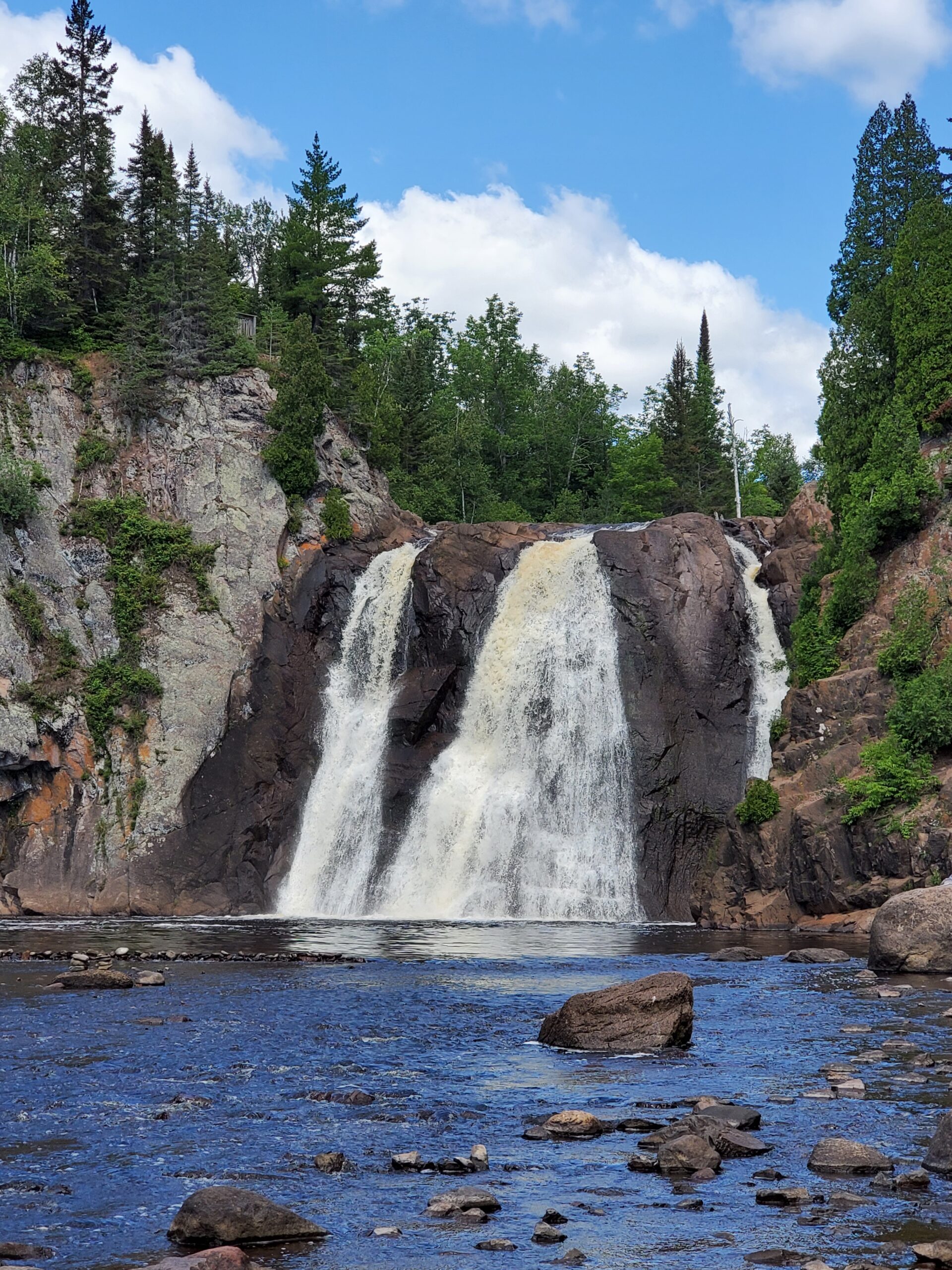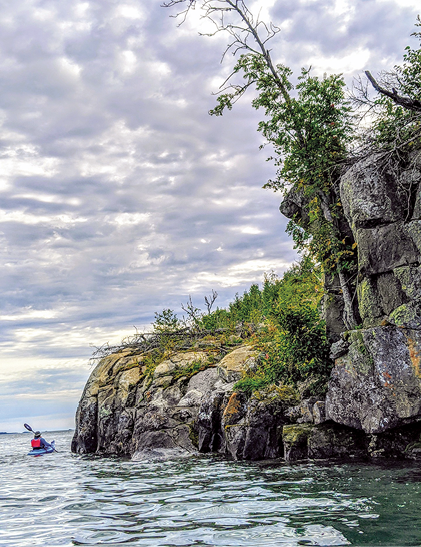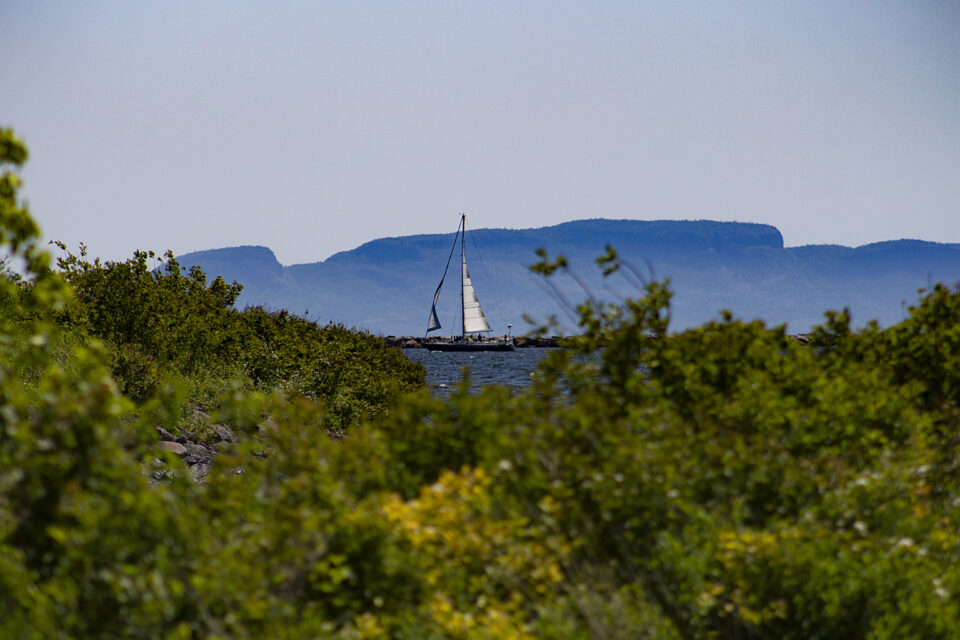Everyone knows the North Shore of Lake Superior has some of the best scenery in the Midwest. But looking out your car window won’t cut it for true North Shore summer experiences. Here are some fun, family-friendly ways to experience the area’s beauty and mystique firsthand.
1. Duluth Does Locally Grown
Duluth could be renamed Farmers Market City. You wouldn’t expect it from a place at almost 47 degrees North latitude, but Duluth and the surrounding towns of Wrenshall, Esko, and Two Harbors are undergoing a farming renaissance. Much of the fresh produce goes to Duluth’s many farmers markets.
The big one is the original Duluth Farmers Market, open since 1911. Centrally located in a bright red barn at the corner of 14th Ave E. and 3rd St., the Market is open Wednesdays 2-5 p.m., and Saturdays 8 a.m. to noon.
Community Action Duluth operates two summer markets that bring fresh and healthy foods to the Central Hillside and Lincoln Park neighborhoods. The Central Hillside market is held on Tuesdays from 2-5 p.m. in the Essentia Health parking lot across from 503 E 3rd St., and the Lincoln Park market is held Thursdays from 3-6 p.m. at the Harrison Community Center.
A new “market” to check out is the Clover Valley Farm Trail: a co-operative group of locally-owned, small farms located in or near Clover Valley (a farming community between Duluth and Two Harbors). According to the organizers, “This is where a farmers market meets a Sunday drive.”

The crowing jewel of the summer market season is the Lake Superior Harvest Festival. This one-day celebration of sustainable agriculture is held on September 9 this year at sprawling Bayfront Park. Browse the huge farmers’ market, the arts and crafts fair, the renewable energy fair, and educational exhibits, all while supporting local agricultural and food sustainability efforts. More than 10,000 people of all ages attend—get your community vibe on.
2. Going Back in Time at Split Rock Lighthouse
No symbol epitomizes the rugged North Shore more than Split Rock Lighthouse. This tall yellow lighthouse seems perched in mid-air. Actually, it’s on a jagged rock cliff that screams tales of survival. The lighthouse was built to save lives in 1909, but identifies today as a landmark to exploration of Minnesota’s northern frontier.
The lighthouse could only be accessed by water for the first 15 years of its existence. Today the historic site has been restored to its early 1920s appearance. Split Rock Light Station was designated as a National Historic Landmark in 2011. This is your destination to feel the struggle it took to survive in this isolated area a century ago.
3. Hiking in Tettegouche State Park
This park is a hiker’s paradise, with the Superior Hiking Trail threading right through the whole park. According to Kurt Mead, Interpretive Naturalist for the MN DNR at Tettegouche State Park, the park’s Sawtooth Mountains, in the region known as the Superior Highlands, formed over a billion years ago during the same geological event that ultimately gave us Lake Superior. Mead explains that anorthosite, a hard mineral, is at the core of most North Shore mountains, and resisted the crush of glaciation, thereby contributing to Tettegouche’s rugged landscape.

In Mead’s words, “Tettegouche really doesn’t do ‘flat’ very well, so the hiking trails involve lots of ups and downs. Hiking to the top of Mt. Trudy, or any other ‘mountain top’ in Tettegouche will provide amazing panoramic views of Lake Superior and the surrounding boreal forests.”
4. Explore the Boundary Waters Canoe Area Wilderness
The BWCAW is an inevitable entry on any list of top northern Minnesota adventures. You can’t say you’ve experienced the heart of the continent until you’ve paddled its endless lakes, trudged its rocky portages with a canoe on your shoulders, and cast a line into its waters teeming with fish. Make it a point of getting off Highway 61 and finding the peace and solitude that only a low-tech return to wilderness can provide. Make your own overnight paddle reservation online at: recreation.gov.
A general rule of thumb—Gunflint Trail entry points commonly lead to lakes that are deeper, colder, and clearer, while Ely-area BWCAW entry points can have sandier beaches and warmer water.
Either way, you are bound to find heaven at the end of the next portage.
5. Grand Portage Rendezvous Days and Pow Wow
History is real at Grand Portage National Monument—a reconstructed fur trade depot on the Grand Portage Reservation of Lake Superior Chippewa (Ojibwe). Experience Voyageur lore and Anishinaabe culture by attending two events in one. The Rendezvous will be held Friday and Saturday, August 11-12 this year, with the Pow Wow taking place on the 12th and 13th.
Everyone is invited to both events, and families are highly encouraged to attend. Admission is free. Visitors are not required to wear period clothing, so come as you are.
The theme of this year’s Rendezvous Days re-enactment is “The North West Company Looks West.” According to the National Parks Service, “A highlight of the weekend will be the building and launching of a traditional bull boat made from a bison hide.” Birchbark canoes were the transportation of choice in the northern forests for millennia, but in areas of North America lacking birch trees, such as the Great Plains, hide boats replaced canoes.
The pow wow is an American Indian cultural gathering focused on dance, song, and family. The vibrant colors of the dancers’ spectacular regalia stand out on the deep blue backdrop of Lake Superior, and the drumming gets your heart pumping and feet moving. Enjoy this celebration of Anishinaabe heritage.
6. Paddle Urban Thunder Bay
Lake Superior gets photographed by millions of people each year—from shore. However, it’s an entirely different experience when viewed from the water.
According to Paul Pepe, manager of Tourism Thunder Bay, “Lake Superior needs to be respected, but not feared.” There’s no better way to tap into the resource than trying stand-up paddle boarding on Thunder Bay’s protected marina harbor. In Pepe’s words, “a slow paddle on glassy calm waters irons the wrinkles from my soul.”

Pepe pays his respects to the Big Lake through early morning paddles on his stand-up paddleboard. “I paddle out to the Thunder Bay Main Light where I can sit and enjoy my morning coffee in solitude before the days get busy,” he says.
Local companies NatriBros and Wilderness Supply offer SUP lessons and equipment rentals in Thunder Bay.
7. Adventuring in Sleeping Giant Provincial Park
Sleeping Giant has more than 100km of hiking trails to explore, transporting you into backcountry bliss. A one-hour and 15-minute ride north of Thunder Bay takes you onto the rugged Sibley Peninsula, with its legendary rock “Giant.”
Set up base camp at the Marie Louise Lake Campground, which offers RV and tent camping, as well as family cabin rentals. The lake has a swimming beach and is paddling-friendly.
Then, lace up your boots and head all the way to giant vistas from the Thunder Bay Lookout and Top of the Giant trails.
8. Return to Your Youth: Paddle to the Sea Park
Holling C. Holling sets children’s minds aglow with a sense of magic and adventure in his 1941 Caldecott Honor Book Paddle-to-the-Sea. This tale has inspired generations of wilderness adventurers with its story of a boy releasing a wooden model of a canoe to weave its way from Lake Nipigon, Ontario, all the way through the Great Lakes to the Atlantic Ocean.
Today, Nipigon is home to Paddle to the Sea Park, complete with a splash pad. Could this be the most northerly splash pad on the continent? One has to wonder.
Starting at the Lake Superior waterfall in the heart of downtown Nipigon, 12 playground stations lead children on a journey of fun through town to the waterfront.
To get in the mood, check out the film Paddle to the Sea, based on the book. Produced by the National Film Board of Canada in 1966, it was directed by Canadian legendary canoeist Bill Mason.




